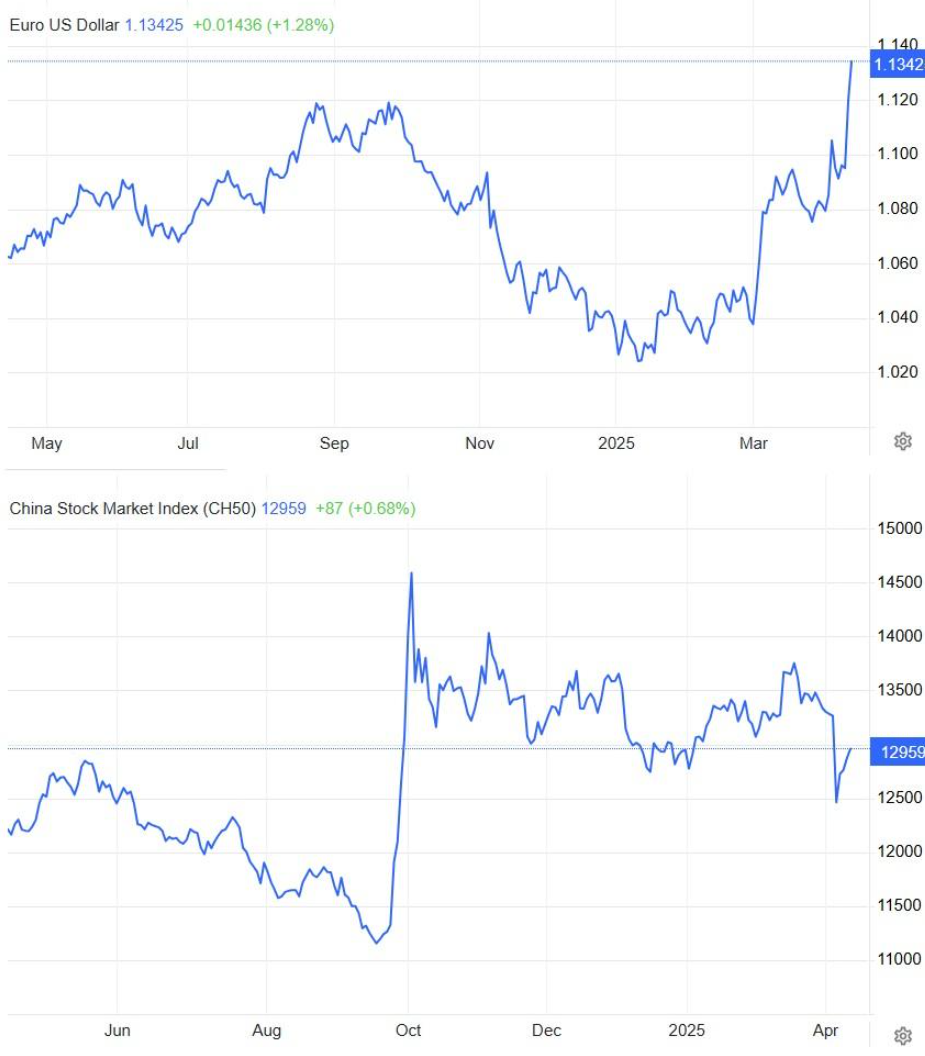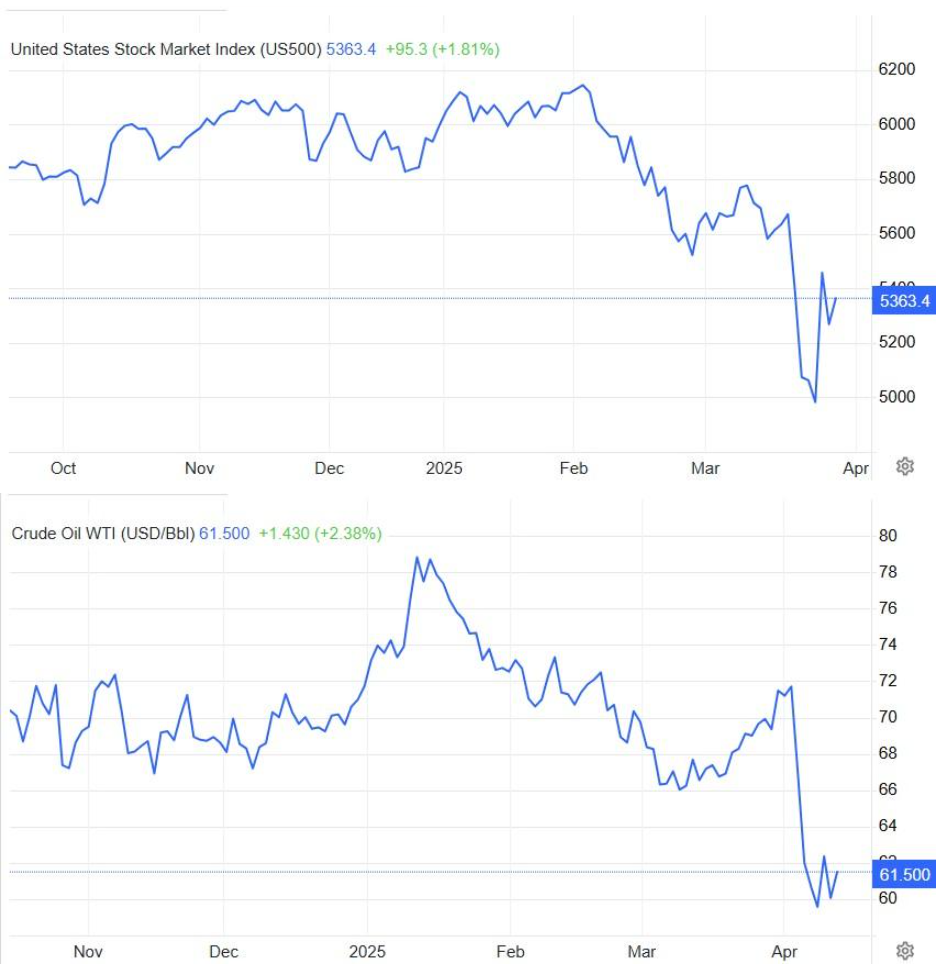In most of our articles, we focus on the “big picture” of global political developments and how these may be priced in on an economic level. We place particular emphasis on the policies expected to be implemented by the Trump administration, as well as the timeline and strategy it will follow to achieve its desired outcomes.
Within this context, we as investment advisors are called to decode the impact of these developments and act accordingly, selecting the appropriate investment tools that will deliver the desired results over the long term. The developments of the last 1–2 weeks may prove to be critical for the next 12–16 months. In my opinion, the outlook is particularly positive.
Nothing has changed from what we have already emphasized—even in our latest article—regarding the high volatility caused by President Trump’s statements, his persistent efforts to reduce debt, increase GDP, and lower the deficit, all while maintaining very low interest rates. The question remains whether he intentionally triggered this sharp market correction through his announcements (despite being an advocate for new market highs during his administration), or whether he took the opportunity to bring overvalued market prices and inflated P/E ratios back to more grounded levels—as we have noted in the past.
We also pointed out the “anomaly” in the strong performance of European markets since the beginning of the year, which had posted gains of over 10%, only to see them wiped out within a single week. Coincidence?
In the U.S., following seven consecutive weeks of negative returns, the indices posted a significant rebound of over 4%, with the S&P 500 recording its highest weekly gains since November 2023.
What changed this negative sentiment? Was it the announcement of a 90-day extension on tariffs for all countries, aimed at allowing time for meetings and the pursuit of a mutual agreement? Yes, partially. But what about China, where from last Friday through Friday, April 11th, U.S. tariffs increased to as much as 145%? Perhaps, as I’ve mentioned in previous articles, this is all part of a broader strategy with a strict timeline and framework—something a serious investor must account for in their investment strategy, given the rapid and often erratic pace of developments.
Based on last week’s global index performance, the market sentiment shifted from negative to neutral-to-positive. This is why we stress the importance of staying committed to a long-term investment strategy. Investors should not allow the news cycle or political interventions to alter the core thesis behind their investments.
A characteristic example, which was widely discussed and shared on social media, is the perception that Trump is indifferent to market declines caused by his actions. On Thursday, after posting on Truth Social that it was “a good time to buy,” markets rallied—and he was subsequently accused of market manipulation. So which is it? Clearly, an investor can lose their compass if they react impulsively to every statement.
The volatility we are seeing is not ideal, but it is during such periods that markets perform the "reset" we’ve referenced many times before.
Statements related to tariffs are expected to continue causing major fluctuations across all markets: bonds, currencies, commodities, and equities. This creates significant opportunities for both short- and long-term investors. I believe we have already seen the bottom—especially in the U.S.—and the market may well be entering an upward trend in the coming period, possibly even returning to positive territory year-to-date.
The Dow Jones Transportation Index also moved higher after seven weeks of declines, acting as a strong catalyst. Similarly, the Baltic Dry Index is trending upwards again, nearing the important level of 1,260 points—historically a launchpad for a move toward 1,650 points, and potentially targeting 2,100 points thereafter.
I continuously highlight the release of several key positive macroeconomic indicators that have not yet been priced into the markets. Notably, for the second consecutive month, the U.S. inflation rate has declined, even registering a negative monthly rate—a development not seen since 2021.
Yesterday, on Saturday, Trump announced that tariffs on China will no longer apply to 20 specific technology products—a move that was welcomed positively by the Chinese government.
Many developments are expected to unfold in the coming weeks on the U.S.-China trade front, and I believe their relationship will gradually move toward normalization. I agree with the view that China is no longer a low-cost manufacturing country as it once was, but rather a global production powerhouse with a long-term development strategy and substantial investment in specialization—particularly in the tech sector, both in human capital and infrastructure.
In the maritime industry, China now accounts for more than 40% of global shipbuilding, and recent orders suggest that this figure is approaching 60%. This explains the impact of Trump's tariffs on ships built in China, which are now subject to additional fees upon entering U.S. ports.
We can therefore conclude that both countries (U.S. and China) have numerous shared interests and stand to benefit from reaching a mutually acceptable solution—albeit one with more favorable terms for the U.S. this time. China will have to reconsider its over $500 billion trade surplus with the U.S., while the U.S. will want to maintain trade relations with the world’s largest manufacturer. Together, these two economies represent a combined GDP of over $50 trillion, with the U.S. alone at $31 trillion.
With the recent measures announced to support its markets, China has increased its tariffs on U.S. goods to 125%, and has indicated that it may introduce further support for both its markets and currency. If this trade war continues, China could see a 2.5% reduction in GDP growth—a risk that threatens its ambition to surpass the U.S. as the world’s top economy by 2035, assuming its current 5% growth rate remains intact.
This, I believe, will be the central argument driving a resolution to this crisis. Let’s not forget what happened in the markets with the mere extension of the 90-day tariff period—imagine the reaction if a full resolution is reached.
The eventual resolution of these issues could deliver immense returns across markets—and this is something President Trump is fully aware of and actively pursuing. Ideally, he would want to achieve it before the end of the month, to positively frame the first 100 days of his administration.
We remain optimistic about market prospects and anticipate a potential reversal in the performance of so-called “safe haven” investment products (e.g., gold, bonds), as fear-driven narratives may start to ease.
Finally, we must not overlook the importance of the Debt-to-GDP ratio. It’s a simple fraction: any miscalculation in the numerator or denominator can lead to explosive consequences. Analysts, experts, and policymakers around the globe are fully aware of this.
I remain at your disposal for any questions or further discussion. I considered it important to share our perspective on the current developments and the investment opportunities that may arise.

by Kotsiakis George









